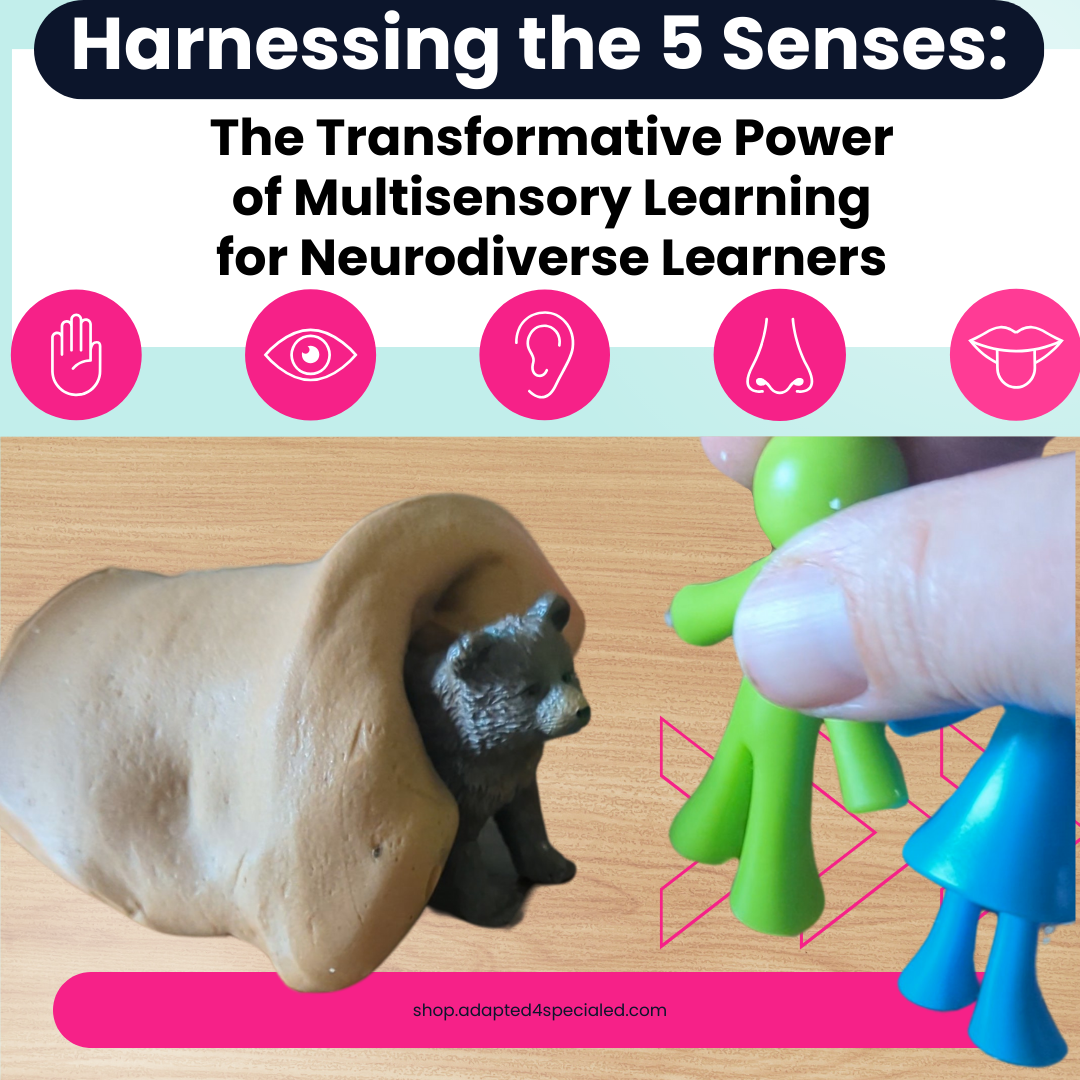As educators, especially in special education, we're always on the lookout for innovative strategies to enhance our teaching methods and cater to the diverse needs of our students.
Multi-sensory Storybook kits have emerged as a powerful tool in this endeavor, offering an engaging way to present information that taps into various sensory pathways.
Here at AdaptEd 4 Special Ed, we believe in the transformative power of these kits and want to share some practical tips on how you can seamlessly integrate them into your daily teaching routine.
Start Small and Plan Ahead
The first step in incorporating multi-sensory kits into your teaching is to start small. Select one or two components of the kit that align with your lesson objectives.
Planning ahead is crucial; consider the goals of your lesson and think about how the tactile, visual, auditory, or olfactory elements of the kit can help achieve these goals. For example, if you’re teaching a unit on ecosystems, use tactile figures to help students understand the different textures found in various ecosystems.
Create a Multi-Sensory Learning Station
Dedicate a corner of your classroom to multi-sensory learning. This station should be stocked with various multi-sensory kits relevant to your curriculum.
Allow students to explore this station during free periods or as part of structured activities. This not only encourages independent learning but also caters to students who benefit from frequent breaks and hands-on engagement with learning materials.
Integrate Kits into Group Activities
Multi-sensory kits are excellent for fostering collaboration among students. Divide your class into small groups and assign each group a different aspect of the kit to explore.
Use Kits for Individualized Instruction
Given the diverse needs of students in special education, individualized instruction is often necessary. Multi-sensory kits can be tailored to meet the unique learning styles and requirements of each student.
For instance, for a student who is particularly responsive to auditory stimuli, emphasize the sound elements of the kit. For another who benefits from tactile feedback, focus on the hands-on components.
Documenting how each student responds to different sensory inputs can help you refine your approach over time.
Involve Parents and Caregivers
Share your experiences with multi-sensory kits with parents and caregivers. Provide them with ideas on how they can use similar strategies at home to reinforce learning.
This not only strengthens the home-school connection but also ensures consistency in the learning experience of the child, which is crucial for reinforcing new skills and concepts.
Reflect and Adapt
Finally, reflection is key to successful integration. Take time to assess the effectiveness of the multi-sensory kits in your teaching practice. Seek feedback from your students about which activities they found most engaging or helpful. Based on this feedback, adapt your approach to better meet the needs of your learners.
Incorporating multi-sensory kits into your daily teaching routine can open up a world of possibilities for both you and your students. By embracing this approach, you can create a dynamic and inclusive classroom environment where every student has the opportunity to engage, understand, and succeed.
Remember, the goal is to make learning accessible, enjoyable, and meaningful for every student. With thoughtful planning and a bit of creativity, multi-sensory kits can become an integral part of your teaching toolkit, transforming the educational experience for all.



